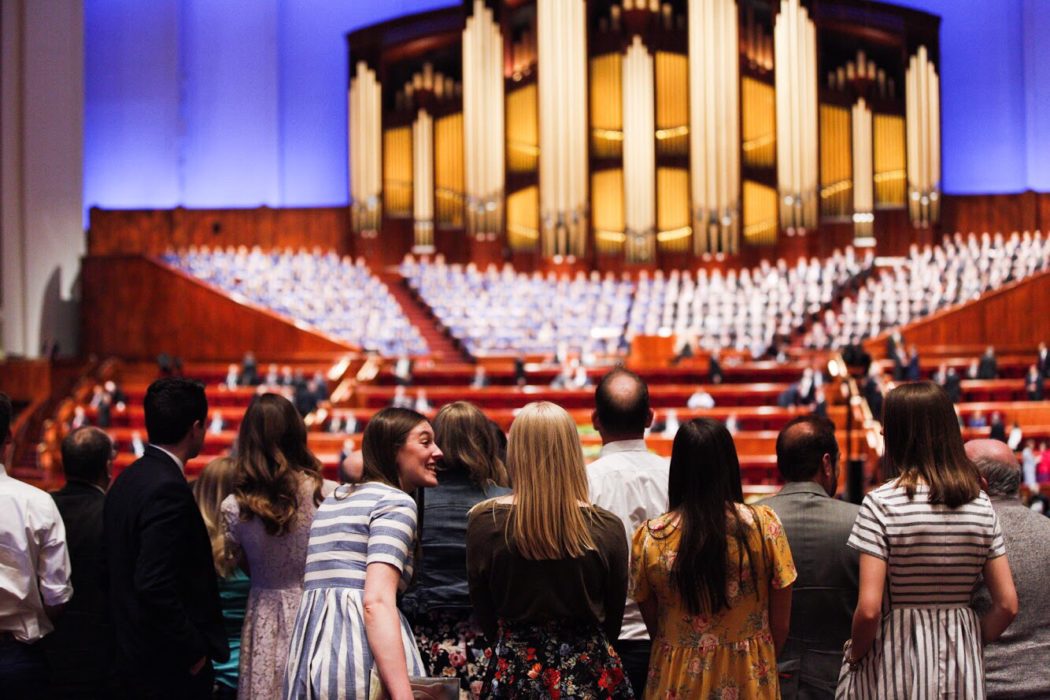The Nelson era brings many changes for LDS church; Aggies react
Saturday and Sunday saw many changes and many firsts at the 188th Annual General Conference of The Church of Jesus Christ of Latter-day Saints.
It was the first General Conference with Russell M. Nelson in charge. Nelson was called as the prophet and president of the church Jan. 14, following the death of former president Thomas S. Monson on Jan. 2.
Two new apostles were announced during the conference: Gerrit W. Gong and Ulisses Soares, the first nonwhite apostles ever to be called in the LDS Church. Gong was born in California and is of Chinese ancestry, while Soares is from Brazil.
On Sunday, Nelson made a stir with the announcement of seven new temples, including the church’s first in Russia and India. Also announced was a temple in Layton, Utah — the 19th in the state — as well as Argentina, Nicaragua, the Philippines and Richmond, Virginia.
Two more changes were announced that will affect members of the church everywhere. The church’s home teaching and visiting teaching programs will be replaced by a new approach known as ministering, and the Priesthood office of high priest will only apply to those currently serving in a bishopric, in a stake presidency or as a patriarch. Now, all men will meet together during Sunday meetings, rather than being separated into groups as they were previously.
Nelson said these changes were part of an effort to simplify and improve the Church’s ministry.
“We have felt a pressing need to improve the way we care for our members,” he said.
With the change of leadership, apostles Dallin H. Oaks and Henry B. Eyring were sustained by members of the religion as counselors in the church’s First Presidency. Eyring had previously served under Monson alongside Dieter F. Uchtdorf, who was replaced by Oaks, and will continue as a member of the church’s Quorum of the Twelve Apostles.
Clara Braegger, a Utah State University student and LDS member, said Uchtdorf is her favorite apostle.
“I relate to him so well,” she said. “I’m excited to see what Heavenly Father would have him doing in his different position now.”
Kirt Rees, the associate director of the Logan Institute of Religion, said he watches General Conference to look for insight and ideas that will help him become a better person. He also pointed out that the three most-senior church general authorities had all recently visited USU.
“It does seem pretty cool,” Rees said, “that in the past school year, we’ve had the man who is the new prophet, the man who is the new president of the Quorum of the Twelve, and the man who is the new acting president of the Quorum of the Twelve, all on our campus.”
Nelson spoke at the Dee Glen Smith Spectrum in September, while Oaks hosted a world-wide “Face-to-Face” broadcast held at the Logan, Utah Institute of Religion Nov. 19, alongside Ballard, who is now the acting president of the quorum.
In addition, this was the first General Conference that did not include a women’s session; the church announced Oct. 27 that priesthood sessions, directed at men and boys, would be held in the spring conferences and a session for women and girls would be held in the fall. Both special sessions were previously held during each General Conference, held every six months.
The Young Women General Presidency was reorganized; former president Bonnie L. Oscarson and her counselors Carol F. McConkie and Neill F. Marriott were released, with Bonnie H. Cordon, Michelle Craig and Becky Craven called as the new president and counselors, respectively. Cordon was previously a counselor in the Primary General Presidency, who oversees the church’s children’s program, and the vacancy she left was filled by Lisa Harkness.
@SpencerABurt

